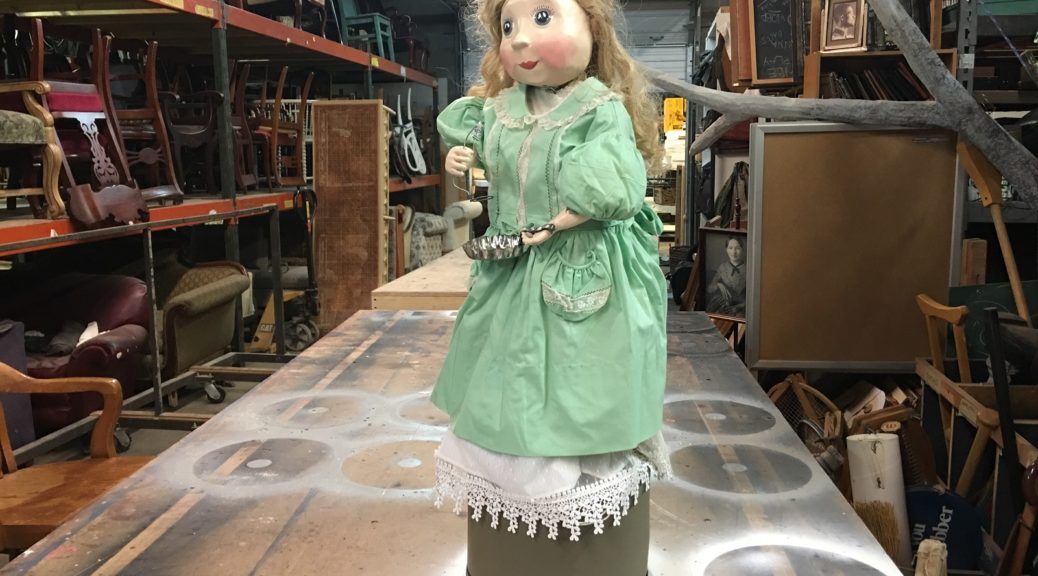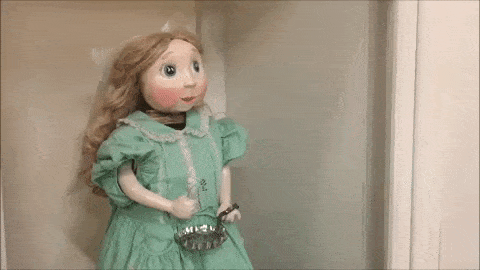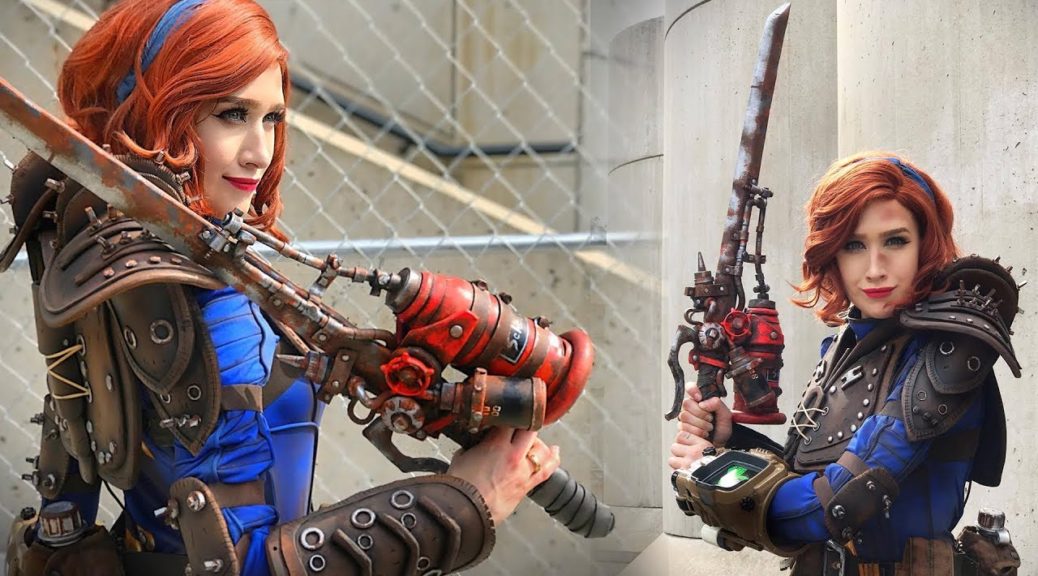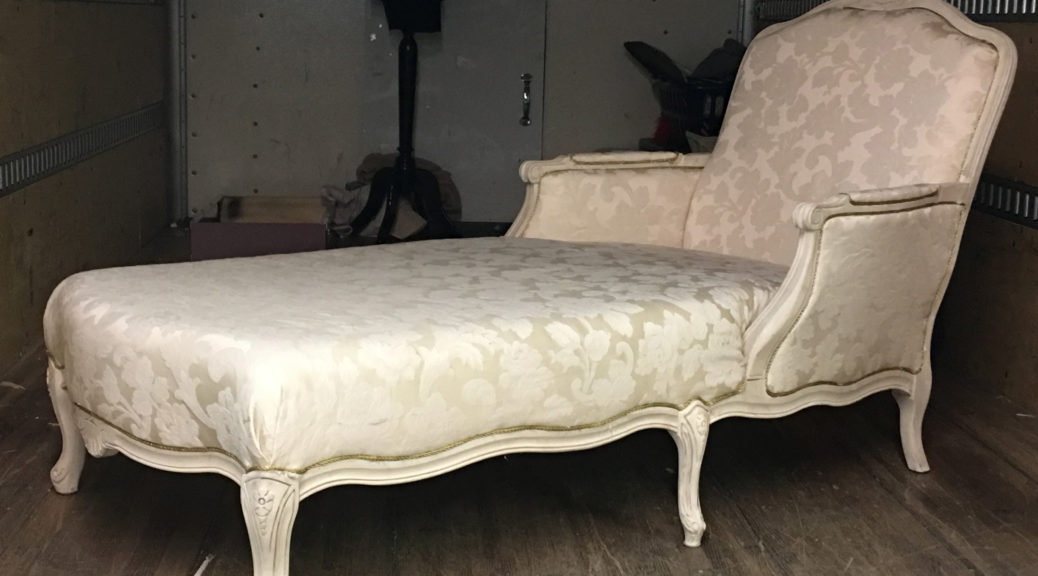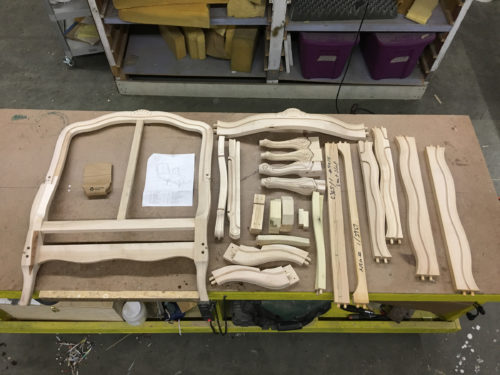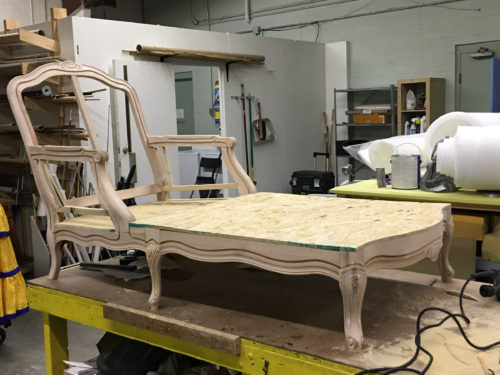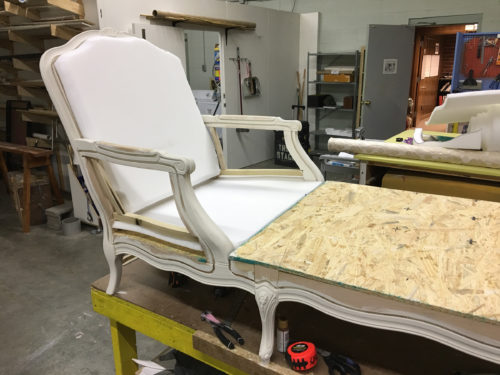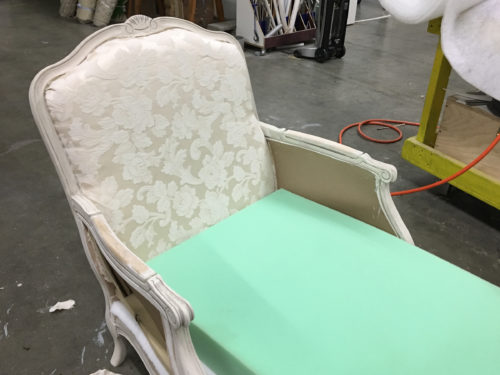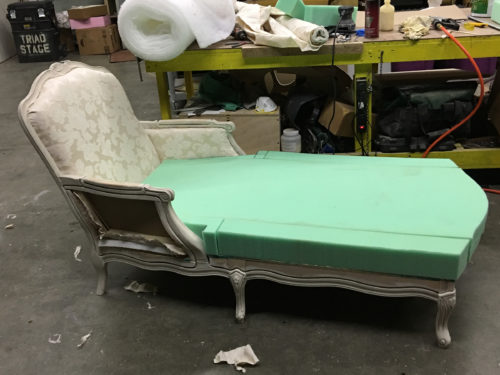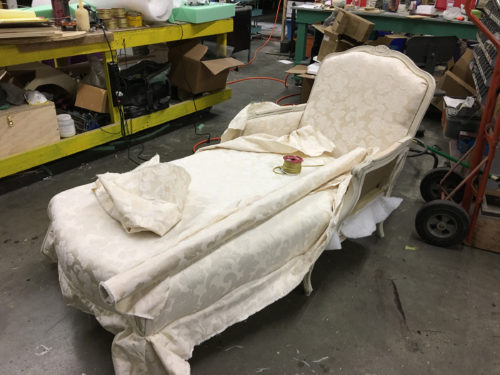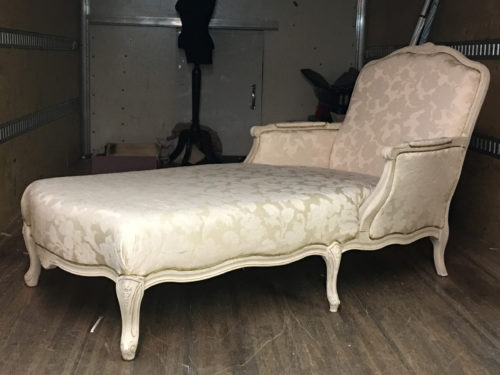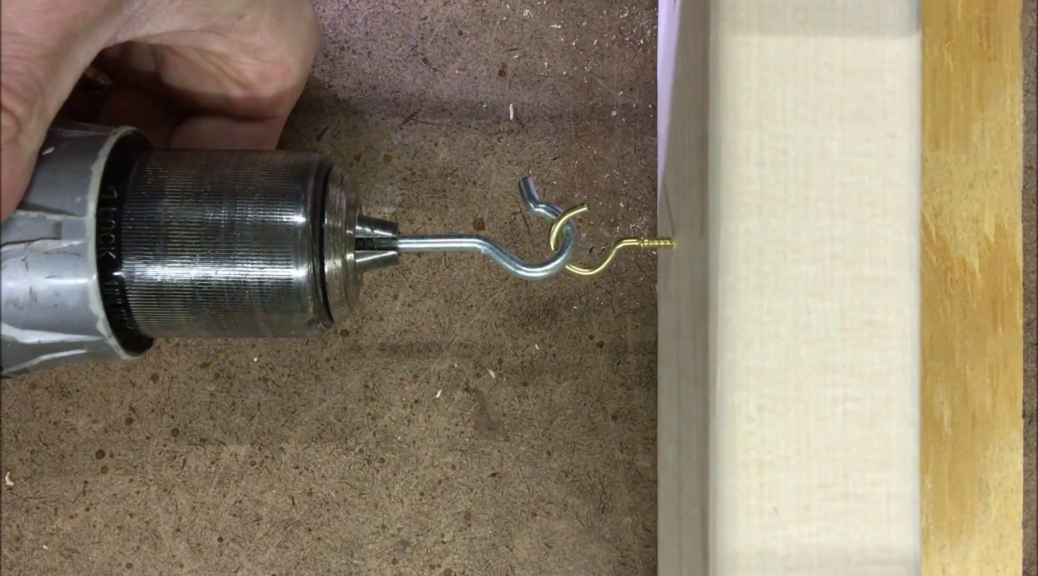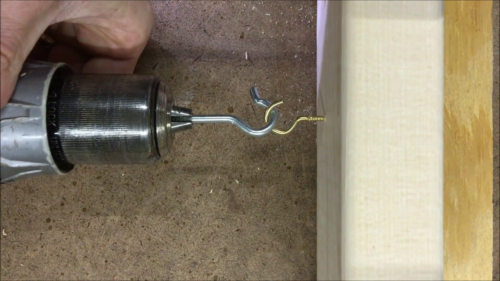If you’ve ever seen the play Buyer and Cellar, you know that a key scene revolves around the description of “Fifi”, an antique bubble blowing automaton. An automaton is a mechanical device that repeats a series of predetermined motions; think of a wind-up toy, or a cuckoo clock. They were really in vogue in the 16th through 18th centuries, when clock makers made all sorts of intricate moving automata in the shape of humans and animals playing out various whimsical scenes.
Most productions of Buyer and Cellar imply the existence of Fifi. The whole set is usually quite minimal, and the props are limited to a chaise and a book. For Triad Stage’s production, the director wanted to know if we could actually have a doll that dipped a wand into soap and blew bubbles out of it. She felt the audience, like herself, may not know what an automaton was, and this pivotal scene would be confusing without some visual reference.
I told the team it would be no problem to make an automated doll that moved by itself, and then I feverishly racked my brain as to how I was going to pull this off. I have been reading The Automata Blog for years, so I had a good mental catalog of potential solutions (anyone interested in automata should definitely dig through the archives on that site).
I put together a video that describes how the final mechanisms work and that show the doll in motion.
My apprentice, Shay, started off by sculpting the head and arms. The head was foam, while the arms were made of wire wrapped in tape. Everything was coated in Apoxie Sculpt. She mounted them to a “birdhouse” which would contain the mechanism.
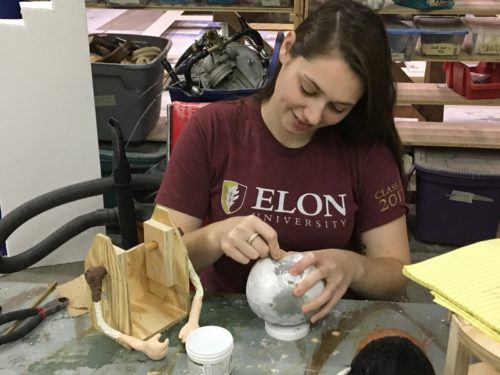
As explained in the video, all the movement was driven by a single crank shaft run by a motor. We prototyped the crank shaft with some bent wire, then transferred the measurements to a full scale drawing which I used to fabricate a more robust shaft from steel.
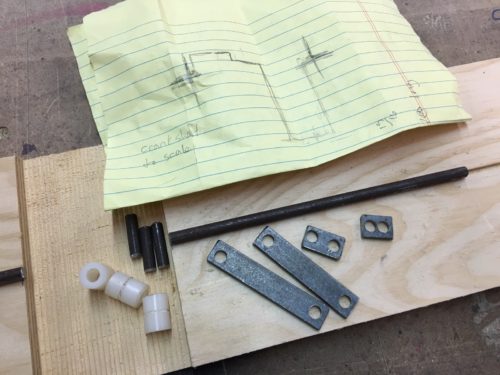
I used nylon spacers which were free to spin around the pieces of quarter-inch rod on the crankshaft. I cut a small groove around the center of the spacers to keep the string from slipping side to side. Everything was welded together to make a single piece.

I began by using string to connect the crank shaft to the arms and head. It would frequently get caught by the spinning crank shaft, causing Fifi to stop working. I tried a number of ways to prevent the string from wandering far enough to the side to get caught, but nothing worked one hundred percent of the time. I wanted to use stiff wire, but the distance between the shaft and the doll’s arm changed as it spun, so I needed the string’s ability to go slack. Eventually, I realized I could use a piece of wire that was long enough to clear the crank shaft, and then attach it to a piece of string for the rest of the distance to the arm.
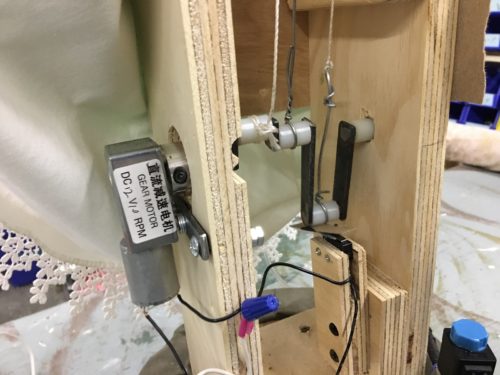
The motor was a basic hobby motor with an attached gear box that slowed it down to 12 revolutions per minute. The crank shaft was not perfectly straight, so the motor was mounted loosely, allowing it to “float” a little bit. The pneumatic portion of the prop is explained in the video; Fifi was attached to an air compressor backstage, with tubing running up her arm and aimed at the bubble wand. A solenoid valve was triggered by the crank shaft whenever her arm was raised, causing air to rush out for a brief moment.
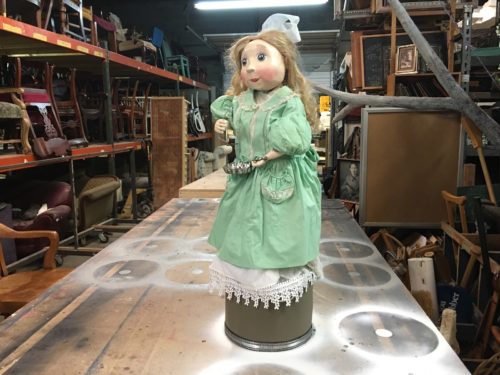
Though Fifi had a lot of challenges, once we got her working, she worked pretty flawlessly throughout the entire run.

